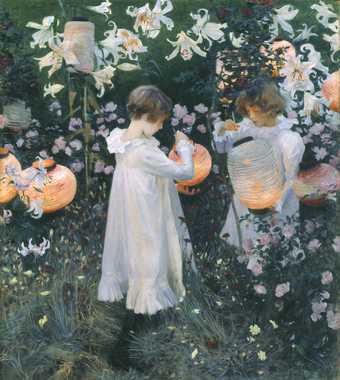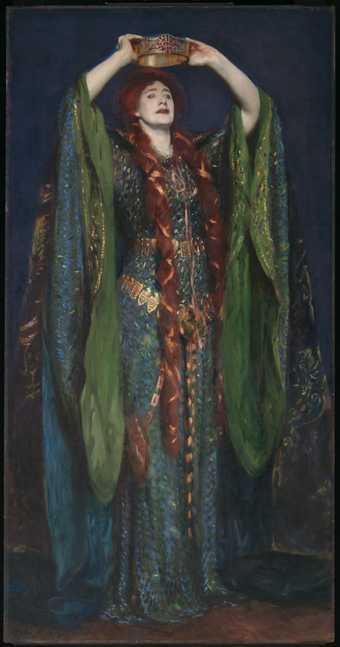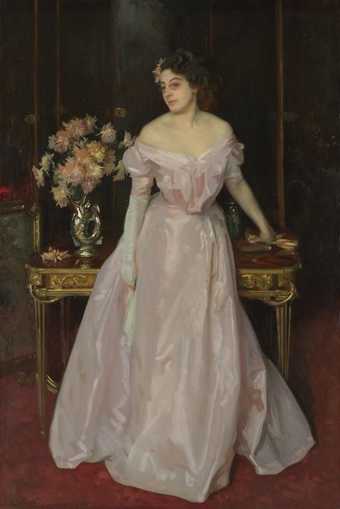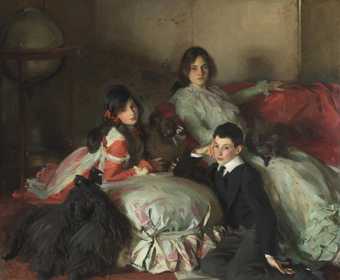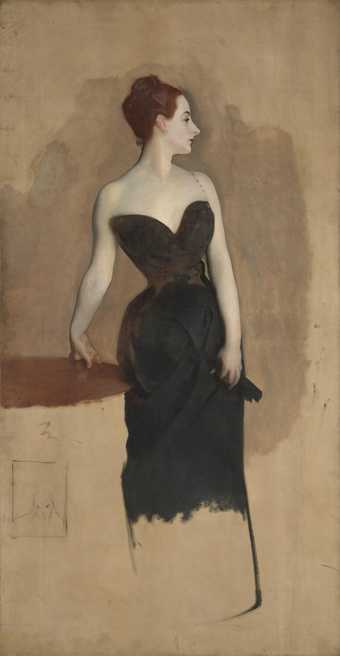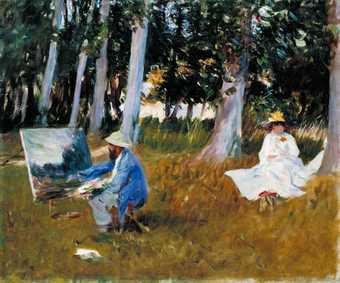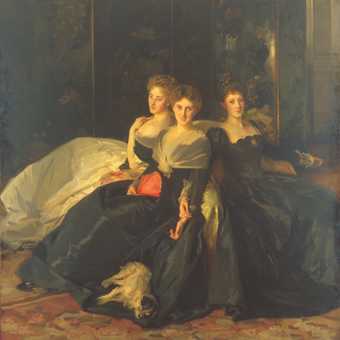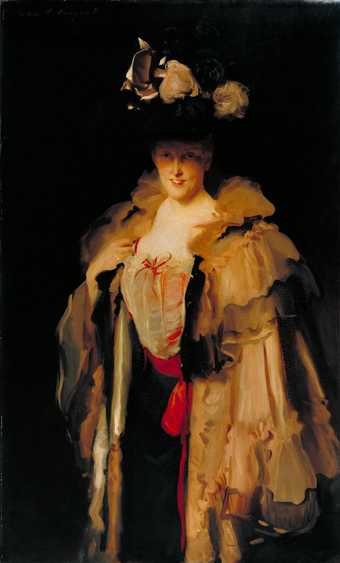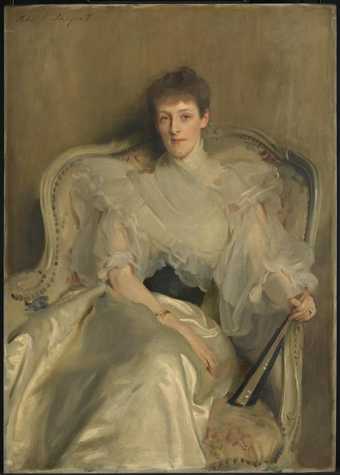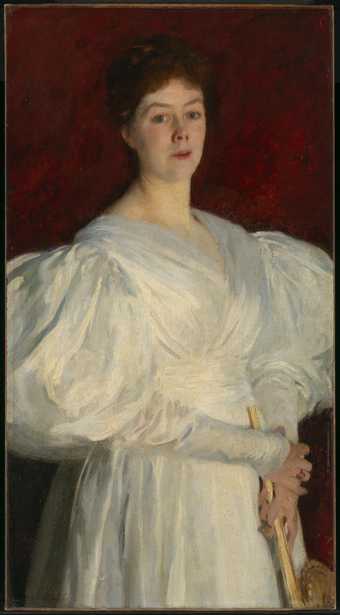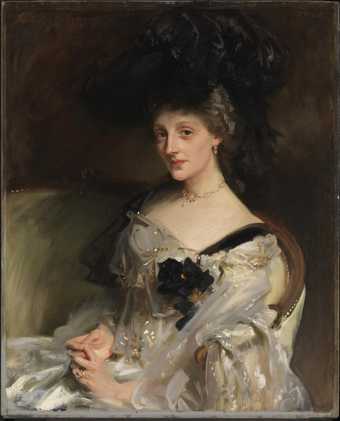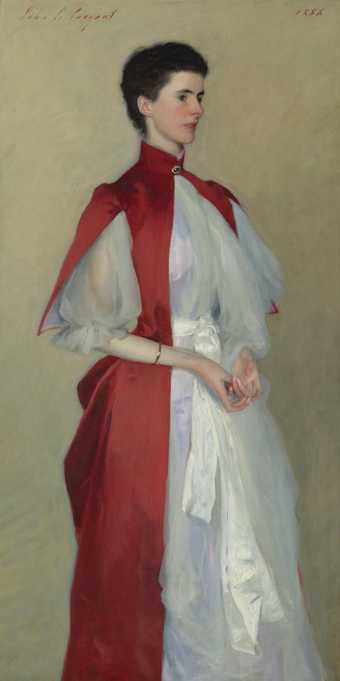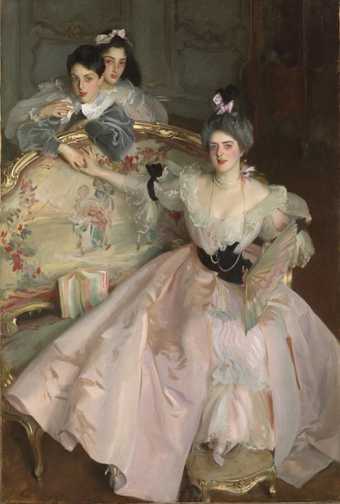
Not on display
- Artist
- John Singer Sargent 1856–1925
- Medium
- Oil paint on canvas
- Dimensions
- Support: 914 × 635 mm
frame: 1140 × 853 × 112 mm - Collection
- Tate
- Acquisition
- Presented by Miss Emily Sargent in memory of her brother through the Art Fund 1929
- Reference
- N04465
Display caption
Gallery label, August 2004
Does this text contain inaccurate information or language that you feel we should improve or change? We would like to hear from you.
Catalogue entry
N04465 MISS PRIESTLEY c. 1889
Inscr. ‘John S. Sargent’ t.r.
Canvas, 36×25 (91·5×64).
Presented by Miss Emily Sargent in memory of her brother through the National Art-Collections Fund 1929.
Exh: R.A., winter 1926 (40); York, March–May 1926 (44); Tate Gallery, June–October 1926; R.S.A., 1928 (196 or 371).
Lit: Downes, 1925, pp.28, 29, 40, 176–7; Charteris, 1927, pp.99, 156, 261; N.A.C.F. Report 1929, 1930, p.44, repr. facing p.44; Mount, 1955, p.432, repr. p.144; McKibbin, 1956, p.117 (erroneously as given to the Tate Gallery by Mrs Ormond and painted 1899); Mount, 1957, p.340; Mount, Art Quarterly, XXVI, 1963, p.405.
Repr. National Gallery, Millbank [Tate Gallery], Review of Acquisitions 1927–29 , 1930, p.43.
Miss Flora Priestley was born in Florence 20 January 1859, the daughter of Augusta Le Poer Trench and her first husband, the Rev. William Henry Priestley, Chaplain of the English Church, Nice (information transmitted by McKibbin from Robert Childers Barton of Glendalough House, Annamoe, County Wicklow, 5 July 1961). Miss Priestley was said by Barton to have met Sargent when they were children at Nice, but recently, in conversations with Mount, he thought it more likely that they first met in Paris in 1882, when student (letter to compiler from Mount, 15 May 1963). Sargent painted at least four, possibly five portraits of her, the first of which is dated variously as 1884 or 1885. (Compare the catalogues of McKibbin and Mount: McKibbin (p.117) lists five oils (including a double portrait with Mrs Ormond), a watercolour and a drawing, and the descriptions he gives make it clear that they are all regarded as different works.) The Tate portrait belongs to the group painted in the spring and summer of 1889 at Fladbury Rectory.
Charteris (op. cit., p.156) identifies one of these portraits with the ‘Portrait of a Lady’ exhibited at the R.A., 1896 (402). Reviews of that year's Academy exhibition, published in the Art Journal, 1896, p.181, and in the Studio, VIII, 1896, p.111, both refer to the red, or crimson, cloak worn by the sitter and the Art Journal reviewer also noted her white dress. These descriptions do not fit the Tate portrait, where the sitter wears a pinky-violet shot-silk dress. Charteris quotes a criticism of the Academy picture written by George Moore (probably in The Speaker), in which the description of the sitter's pale complexion and arched eyebrows could be regarded as corroborative evidence of the identification with Miss Priestley. In the National Gallery, Millbank [Tate Gallery], Review of the Acquisitions 1927–29, 1930, p.23, the compiler noted that the 1896 R.A. exhibit was a portrait of Miss Priestley painted at Nice between 1879 and 1882, but this information is nowhere else recorded or corroborated. Mount is inclined to doubt that the 1896 portrait was of Miss Priestley, and knows of no picture of her in a white dress and red cloak.
Published in:
Mary Chamot, Dennis Farr and Martin Butlin, The Modern British Paintings, Drawings and Sculpture, London 1964, II
Explore
- objects(23,571)
-
- clothing and personal items(5,879)
-
- make-up(87)
- individuals: female(1,698)
- dress: fantasy/fancy(506)
-
- exotic(22)
- Far East(9)
You might like
-
John Singer Sargent Carnation, Lily, Lily, Rose
1885–6 -
John Singer Sargent Ellen Terry as Lady Macbeth
1889 -
John Singer Sargent Hylda, Daughter of Asher and Mrs Wertheimer
1901 -
John Singer Sargent Essie, Ruby and Ferdinand, Children of Asher Wertheimer
1902 -
John Singer Sargent Study of Mme Gautreau
c.1884 -
John Singer Sargent Claude Monet Painting by the Edge of a Wood
?1885 -
John Singer Sargent The Misses Hunter
1902 -
John Singer Sargent Mrs Charles Hunter
1898 -
John Singer Sargent Vernon Lee
1881 -
John Singer Sargent Colonel Ian Hamilton, CB, DSO
1898 -
John Singer Sargent Jean, Wife of Colonel Ian Hamilton
1896 -
John Singer Sargent Mrs Frederick Barnard
1885 -
John Singer Sargent Mrs Philip Leslie Agnew
1902 -
John Singer Sargent Portrait of Mrs Robert Harrison
1886 -
John Singer Sargent Mrs Carl Meyer and her Children
1896

